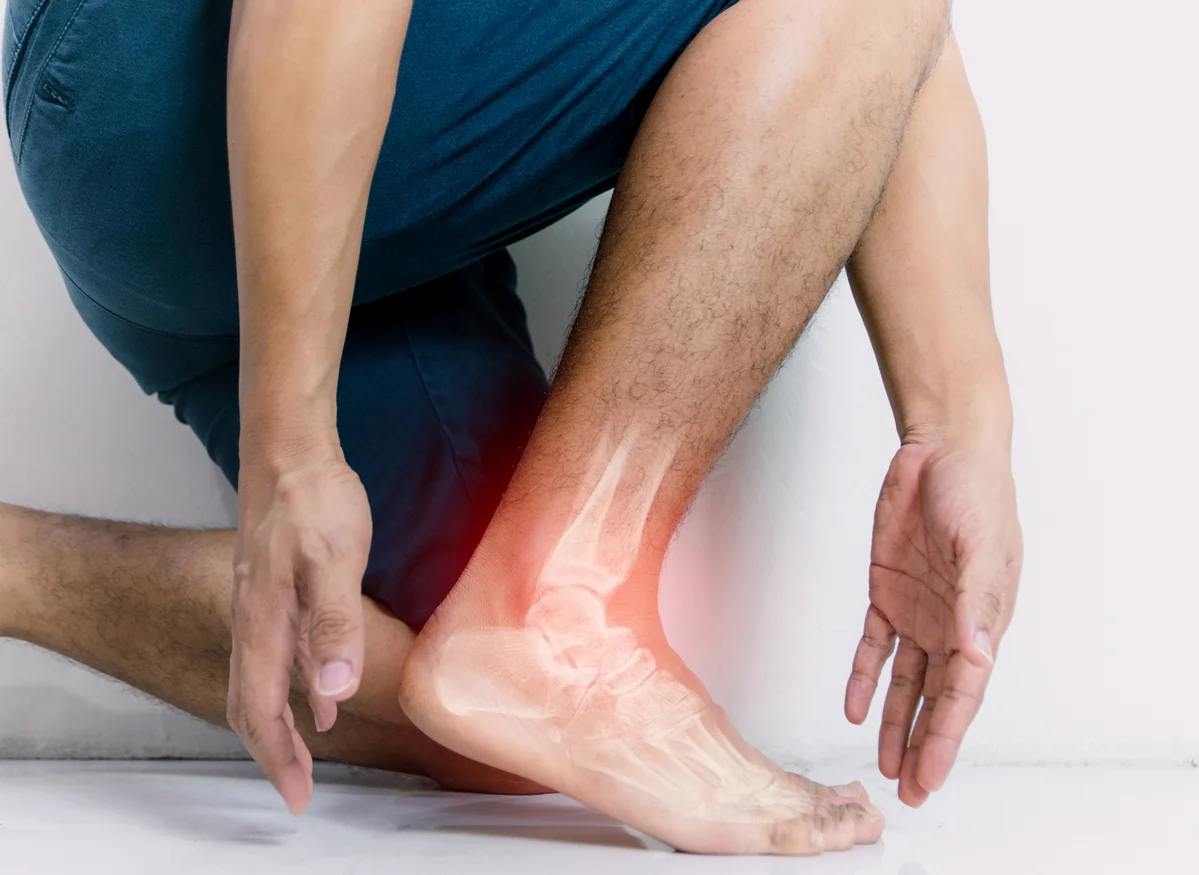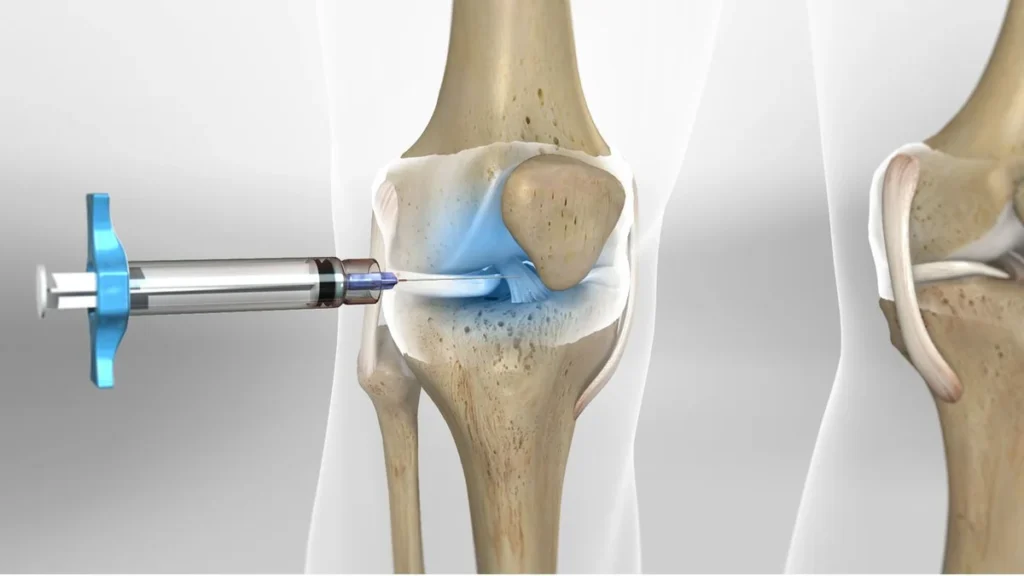Ankle pain is a physical problem that usually occurs in the area where the heel and calf connect. The primary cause of this type of pain is usually a fracture or sprain in this area.
The ankle consists of a complex form of bones, ligaments, tendons, and muscles. This part of the body has the ability to bear weight, yet it can still be injured. You may feel pain inside or outside this area or along the Achilles tendon that connects the calf muscles to the heel bone.

In this article, we will examine factors that can cause ankle pain besides fractures and sprains, as well as explore treatment methods. Stay with us at the International Limb Lengthening Center of Iran.
How Does Ankle Pain Occur?
Feet, as the main pillars of the body, bear your total weight. This high pressure can impact the ankle and increase the likelihood of injury or damage to this sensitive joint. Sometimes, even the slightest pressure or injury can cause damage to the ankle and extend to the calf areas.
What are the Symptoms of Ankle-Pain?
Ankle pain is typically accompanied by the following symptoms:
- Swelling
- Stiffness
- Redness
- Warmth
- Sensitivity to touch
- Skin color change in the painful area
- Pain when standing on the foot
- Inability to lift heavy objects
- Pain in the calf and other joints
Causes of Ankle Pain
The most common reasons for ankle damage and the onset of pain in this area include:
- Fracture: Ankle-pain can result from a fracture in one of the bones in this area.
- Sprain: Sprains are a common cause of ankle-pain and occur when the ankle joint is under intense rotational pressure.
- Bursitis: Inflammation of the joint sacs, called bursae, can cause severe pain in the ankle.
- Tendonitis: Inflammation of the tendons, also known as tendonitis, can cause ankle-pain.
- Weak Ankle: Weak muscles can lead to a weakened ankle and, consequently, pain. In addition to these factors, arthritis, gout, flat feet, and infection can also contribute to ankle pain.
Right Ankle Pain: Signs and Possible Factors
If you experience severe pain in your ankle and observe swelling or bruising in the area, consult an orthopedic specialist immediately. This condition may require further examination to determine the exact cause. Specialists believe that sometimes vague and bothersome pain in the right ankle may be due to joint inflammation, spinal injury, neurological problems, or muscle strain.
Left Ankle Pain in Women: Factors and Causes
The cause of left ankle pain in women is an issue that definitely needs to be examined under the supervision of an orthopedic specialist. Some women may have weaker muscles in their legs, leading to ankle weakness and pain in this area.
Other important factors that can contribute to left ankle pain in women include:
- Heart problems: Heart issues can be one of the factors causing pain in the left ankle in women.
- Pressure on the nerves of the left ankle
- Anemia
- Joint inflammation
- Standing on feet excessively
In any case, for accurate diagnosis and proper treatment of ankle pain, consultation with an orthopedic doctor is essential.
Causes of Ankle Pain When Walking: Identification and Treatment Methods
Ankle pains while walking can be due to damage to the bone, tendon, ligament, and muscles of the ankle. To diagnose the primary cause of this pain, you may need medical consultation. Ankle pain while walking is usually due to factors like foot sprains, ankle fractures, tendon tears, or strains.
If you feel pain in the back of your ankle while walking, it’s likely due to a strain or tear of the Achilles tendon, which often occurs in intense sports like football and running.
Treatment Methods for Ankle Pain
The best treatment methods include:
Home treatment for ankle pain:
- Rest: Avoid standing for long periods to allow the pain to heal.
- Ice: Apply an ice pack to the injured area for 10 to 15 minutes, three times a day.
- Compression: Control swelling and pressure in the ankle with a bandage.
- Elevation: Elevate your leg to reduce swelling in the ankle (you can place a pillow under the ankle). In any case, for accurate diagnosis and proper treatment of ankle-pain, consultation with an orthopedic doctor is essential.
Best Painkillers for Ankle Pain
When facing ankle-pain, the following painkillers can help:
- Piroxicam gel
- Diclofenac gel
- Ibuprofen
- Naproxen
- Diclofenac tablets
Medical Treatment for Ankle Pain
If your ankle-pain does not lessen after a week or is accompanied by severe bruising and swelling, you must definitely visit an orthopedic specialist. Doctors often use the following treatment methods:
- Using a brace or splint to stabilize the ankle and relieve pain
- Joint aspiration to remove excess joint fluid and reduce ankle swelling
- Prescribing pain and inflammation-reducing medications such as those used to treat arthritis and gout
- Offering physiotherapy to strengthen ankle muscles and improve flexibility
- Injecting steroids or anti-inflammatory drugs in case of severe ankle-pain to reduce inflammation
- Surgery in cases of bone fractures or torn ankle tendons to repair the joint.
Guide to Consulting a Doctor About Ankle Pain
Mild ankle pain usually improves with home treatments, but complete recovery takes time. If you experience severe ankle-pain, especially after an injury, it’s better to consult an orthopedic specialist.

To make an appointment or get an online consultation with Dr. Nader Motallebi Zadeh, Limb lengthening surgeon, proceed here.
Frequently Asked Questions About Ankle Pain
What are the best over-the-counter painkillers for reducing ankle pain?
Piroxicam gel, diclofenac gel, ibuprofen, and naproxen are commonly used as over-the-counter painkillers for reducing ankle pain.
Who is more likely to experience ankle pain?
This type of pain is more common in people over 65 years old, those who are overweight, or those who participate in sports involving jumping and rapid direction changes.
What is the most common cause of ankle pain?
An ankle sprain is the most common reason for pain in this area, which causes damage to the ligaments or tendons connecting the ankle bone.
When does ankle pain require an orthopedic specialist’s examination?
You should usually see an orthopedic specialist if you have symptoms such as severe and persistent pain, a deformity in the ankle, a feeling of warmth, redness, sensitivity in the injured area, a fever above 37.8 degrees Fahrenheit, or an inability to bear weight on the foot.



